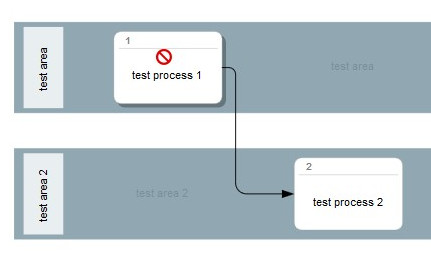Processes are blocked by prohibition signs in the WebModel
Applies to: viflow (subscription | 9 | 8 | 7) | Article: 1343419 | Updated on 23.05.2024
If processes are displayed as locked in the viflow WebModel with a prohibition sign, this is not an error but normal program behavior that can have several causes.
1. The process is currently in the activated release workflow and has not yet been released
In this case, the process can only be called up again if the release workflow in viflow has been set to Released before exporting to the WebModel. You can find more information on this topic in the viflow help in the articles ››› Activate process approval workflow and ››› Perform process approval workflow.
2. Only parts of the process model were exported as WebModel
In this case, a few things need to be considered. In the simplest case, the affected process was simply deactivated in the overview of the processes during the export and must be activated.
However, it can happen that the affected process is part of a process that has been deactivated for export to the WebModel.
If a process for export as a WebModel is deactivated in viflow, all sub-processes are automatically blocked in the WebModel. This lock applies even if they are part of other shared processes that have been exported to the WebModel.
There are two ways to prevent such a deactivation in the WebModel:
- Export all processes of the process model to the WebModel.
- Delete the process in question from all process graphics that are not intended for export to the WebModel.
Example: "Process A" consists of 10 sub-processes "A1" - "A10". "Process A" should not be exported, but "Process A3" should be. In this case "Process A3" must be deleted from the process graphic ("Process A") and selected during export. After deleting it from the graphic, "Process A3" is either at the top level or – if used more than once – incorporated under other processes in the process model.